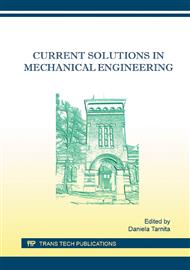[1]
P.N. Patankar, V. Gopinathan, P. Ramakrishnan, Studies on carbon fiber reinforced aluminum composite processed using pre-treated carbon fibers, Journal of Materials Science, 26 (1991), 4196-4202.
DOI: 10.1007/bf02402968
Google Scholar
[2]
V.Y. Varshavskii, Fibre composite materials. Realization of the properties of carbon fibers in composite materials. Part 2. Carbon fibre composites with a metal matrix (review), Fibre Chemistry, 27(1995), 176-183.
DOI: 10.1007/bf00554579
Google Scholar
[3]
V.Y. Varshavskii, Y.G. Korabel'nikov, Fibre composite materials. Realization of the properties of carbon fibers in composite materials. Part 1. Realization of the elastic-strength properties of carbon fibers in unidirectional carbon filled plastics (review), Fibre Chemistry, 27(1995).
DOI: 10.1007/bf00557669
Google Scholar
[4]
G.M. Gunyaev, L.P. Kobets, G.G. Zaitsev, Mean values of the mechanical properties of carbon fibers from test results on carbon-fiber-reinforced plastics, Problemy Prochnosti, 8 (1976), 36-40.
DOI: 10.1007/bf01529798
Google Scholar
[5]
Y. Zhou, Y. Wang, S. Jeelani, Y. Xia, Experimental Study on Tensile Behavior of Carbon Fiber and Carbon Fiber Reinforced Aluminum at Different Strain Rate, Appl Compos Mater, 14 (2007), 17-31.
DOI: 10.1007/s10443-006-9028-5
Google Scholar
[6]
H. Rong, K-H Dahmen, H. Garmestani, M. Yu, K. I. Jacob, Comparison of chemical vapor deposition and chemical grafting for improving the mechanical properties of carbon fiber/epoxy composites with multi-wall carbon nanotubes, J Mater Sci, 48 (2013).
DOI: 10.1007/s10853-012-7119-2
Google Scholar
[7]
S.H. Li, C.G. Chao, Effects of carbon fiber/ Al interface on mechanical properties on carbon-fiber-reinforced aluminum-matrix composites, Metalurgical and Materials Transactions A, 35A(2004), 2153-2160.
DOI: 10.1007/s11661-004-0163-z
Google Scholar
[8]
J. Li, Y.C. Xia, The reinforcement effect of carbon fiber on the friction and wear properties of carbon fiber reinforced PA6 composites, Fibers and Polymers, 10 (2009), 519-525.
DOI: 10.1007/s12221-009-0519-5
Google Scholar
[9]
W. Nowacki, Dynamics of elastic systems, Technical Publishing House, Bucharest, (1969).
Google Scholar
[10]
D., Băgnaru, S. Rizescu, D. Bolcu, Vibrations of elastic systems, Didactic and pedagogical Publishing House, Bucharest, (1997).
Google Scholar
[11]
ASTM E756, Standard test method for measuring vibration damping properties of materials, (1998).
Google Scholar
[12]
S.S. JUNG, Y.T. KIM, Y.B. LEE, S.H. SHIN, D. KIM, H.C. KIM, Measurement of the resonance frequency, the loss factor and the dynamic Young's modulus in structural steel and polycarbonate by using an acoustic velocity sensor, Journal of the Korean Physical Society, 49 (2006).
Google Scholar


